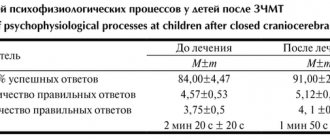The conjunctiva is a thin transparent mucous membrane that covers the inner surfaces of the eyelids and tightly fits the eyeball (sometimes the expressive term “conjunctival sac” is used). When blinking, during sleep and, in general, during any closing of the eyelids, the eyelids are completely covered by this membrane. The purpose of the conjunctiva is to secrete natural “lubricant” and distribute it, along with the secretion of the lacrimal glands, over the surface of the eye, primarily along the anterior protective corneal layer. This achieves the necessary hydration (with prolonged continuous contact with oxygen in the air, the cornea would dry out) and cleansing of small particles, and also minimizes friction during eye movements.
Types of conjunctivitis
- Bacterial conjunctivitis - sequentially affects both eyes: first one, and after 1-3 days - the second. May be complicated by keratoconjunctivitis, blepharitis. Includes several subspecies:
- Gonorrheal conjunctivitis, or gonoblennorrhea of newborns. Appears on days 2-3 of life.
- Chlamydial - appears on days 5-10 of life. In older children, infection is possible in closed reservoirs and swimming pools.
- Diphtheria - usually develops with diphtheria of the pharynx, most often affecting children under the age of 4 years. Thanks to vaccination, there are only isolated outbreaks of morbidity. Source: N.N. Arestova, L.A. Katargina, E.V. Yani Conjunctivitis and dacryocystitis in children: clinical characteristics, modern treatment options // Russian Pediatric Ophthalmology, 2021, No. 11(4), pp. 200-206
- Viral conjunctivitis usually develops against the background of acute respiratory viral infection. They may be complicated by a secondary bacterial infection, which causes purulent discharge from the eyes.
- Herpetic conjunctivitis is characterized by rashes, in the place of which, after opening, scars remain.
- Allergic – inflammation of the mucous membrane of the eyes due to a reaction to any substances, hair and particles of animal epidermis, medications, dust. It can occur in acute and chronic form and is complicated by bacterial infection.
Age characteristics
Data on the incidence of conjunctivitis are largely contradictory. Thus, some experts argue that there are practically no age differences, but most sources clearly show: children get conjunctivitis much more often than able-bodied adults, and more often than older people (who, for a number of reasons, are susceptible to chronic rather than acute forms).
It is also reliably known that the structure of morbidity differs, in particular, infectious conjunctivitis, where in adult patients the predominant (several times) cause is adenoviral infection. Among children, bacterial and viral conjunctivitis spread equally “readily” – and very quickly. This is explained by the high contagiousness and virulence of pathogens (adenoviruses, cocci, Pseudomonas aeruginosa, etc.), then the network, simply put, is the contagiousness of such infections and the likelihood that when the pathogen enters the body it will cause disease.
Taking into account the characteristics of children's groups in preschool and school institutions, the incomplete development of immunity and sanitary-hygienic automatisms, as well as the main routes of infection (viral infection transmitted by airborne droplets, bacterial infection through dirty hands, shared towels, pillows, etc.), - It is not surprising that childhood infectious conjunctivitis almost always takes on the character of an epidemic outbreak. Therefore, it is recommended that an acutely ill child be isolated as soon as possible and, if possible, “kept at home” for several days until the immune system and/or prescribed treatment eliminates the infection.
In addition, there is another specifically childhood mechanism of infection, with the most dangerous and easily chronic urogenital infections (gonococci, chlamydia, etc.), also pathogenic in relation to the conjunctiva: infection from the mother during childbirth. That is why it is criminal to ignore referrals for smears and tests during pregnancy, as well as to neglect the need to treat such infections.
Reasons for the appearance of a child
The inflammatory process on the conjunctiva can be provoked by:
- Viruses, including adenovirus and herpes. The disease lasts no more than 10 days, but can be complicated by bacterial infection.
- Infections – gonococci, streptococci, Pseudomonas aeruginosa, staphylococcus, fungi. The disease is severe, on average 2 weeks.
- A fungus that affects children with immunodeficiency.
- Chlamydia is an intermediate microorganism between viruses and bacteria.
- Improper hygiene, eye injuries with subsequent infection.
- Allergy – intolerance to certain substances, medications, products.
- Long-term inflammatory diseases of the nose, eyes, ears - tonsillitis, sinusitis, rhinitis.
Treatment of conjunctivitis
Self-treatment of a child at home is contraindicated; it is necessary to undergo an examination by a doctor. The treatment regimen depends on the causes of the disease. It is not dangerous, but requires professional treatment. Danger arises if conjunctivitis is accompanied by an infection or virus. This leads to long-term treatment, causes complications and can cause vision loss.
The main treatment for inflammation is the local use of drugs and drops. The doctor also prescribes multivitamins, immune-strengthening agents, and eye washes. The condition for a quick recovery is maintaining hygiene.
A patient with viral or bacterial conjunctivitis should be isolated from healthy children. It is necessary to wash your eyes with chamomile infusion. Treatment is carried out 4 to 8 times a day using cotton swabs from the outer edge of the eye to the inner one. Each eye should have its own tampon to avoid spreading infection.
For bacterial conjunctivae, antibacterial drugs are prescribed, and for viral conjunctivae, antiviral drugs are prescribed. If the inflammation is caused by an allergen, long-term treatment is carried out using local and general drugs. Special therapy includes avoiding contact with the allergen.
Treatment of children under one year of age
It is necessary to show the baby to a pediatric ophthalmologist. Discharge from the eyes can be caused by physiological reasons.
In newborns, the nasolacrimal ducts are not yet fully open. They open a few months after birth. For this reason, in infants the disease takes the form of dacryocystitis. Since tears do not flow out, swelling occurs.
In situations where the disease has occurred before it has fully developed, treatment with ointments and drops will not be enough. The doctor will advise you on how to do a light massage to reduce burning and pain in your baby. Treatment boils down to washing the eyes and removing mucus in accordance with hygienic requirements.
Conjunctivitis requires timely and competent treatment. Only a specialist can determine the cause and predict the duration of therapy for a certain form of the disease.
If the disease is neglected, it can lead to cataract, keratitis, dry eye syndrome, and blepharitis. Such pathologies require long-term treatment, and there is a risk of decreased visual function.
Over a year old
The doctor prescribes daily eye washing with chamomile decoction or special means. Starting from 3 years of age, drops, erythromycin and tetracycline ointments are prescribed. The drugs have a pronounced anti-inflammatory effect and eliminate symptoms.
The ointment is placed behind the lower eyelid, the number of times is determined by the doctor depending on age.
To instill the medicine, the child is placed on a flat surface. The lower eyelid is pulled back and the required amount of the drug is dripped into the conjunctival sac. Distribution of the product over the eye occurs independently; excess can be blotted with a clean napkin.
If your baby closes his eyes, you can release drops between the eyelids. When you open your eyes, they will get on the mucous membrane.
It is forbidden to use medicines that have expired, even if a little time has passed. You should not put bandages on your eyes, they promote the spread of microorganisms and can injure the inflamed tissue of the eyelids.
Signs of conjunctivitis in children
Symptoms vary depending on the type of disease. However, there are general signs characteristic of any inflammation of the conjunctiva:
- swelling of the eyelids;
- swelling of the conjunctiva;
- fear of light;
- increased lacrimation;
- Pain in the eyes;
- sensation of a foreign body in the eyes;
- blepharospasm.
In infants, the disease can be suspected by frequent crying, restlessness, and frequent attempts to rub their eyes.
Signs of diseases, depending on the type:
- Bacterial has a typical symptom in the form of viscous or mucopurulent discharge from the eyes. The child's eyelids stick together and crusts dry out on the eyelashes. The color of the pus can be light yellow or even yellow-green.
- Gonorrheal is characterized by bluish-purple skin color, dense swelling of the eyelids, swelling of the conjunctiva, and copious discharge of pus.
- Chlamydial - swelling of the mucous membrane of the eyelids, drooping eyelids, liquid pus in the conjunctival cavity.
- Diphtheria - thickening of the eyelids, painful swelling, discharge of cloudy secretions, gray films on the surface of the conjunctiva, after removal of which the mucous membrane bleeds.
- Viral - copious watery discharge plus symptoms of ARVI.
- Herpetic - blistering rashes on the eyes.
- Allergic – excessive lacrimation, redness and swelling of the eyes.
Symptoms
The clinical picture of an ophthalmological disorder depends on the underlying cause that caused it. The symptoms will have features characteristic of this form of pathology.
Conjunctivitis of the eyes in a child, caused by viruses, is accompanied by swelling and redness of the conjunctiva, eyelids, dryness, and the appearance of follicles on the mucous membrane. Cough, runny nose, and hyperemia are often observed, which is typical for viral infections.
If the cause of eye conjunctivitis is bacterial pathogens, then the appearance of purulent discharge of a yellowish or greenish tint is inevitable. These discharges cause a lot of trouble for the baby especially in the mornings, when he cannot open his eyes due to gluing of eyelashes and eyelids.
Allergic conjunctivitis of the eyes in a child manifests itself quickly. The baby begins to intensively scratch his eyes, redness, pain, and copious secretion of tear secretion occur.
Against the background of a viral course of the disease, a bacterial complication often occurs, then the symptoms become mixed. Treatment of eye conjunctivitis in this case will be more extensive.
Diagnostic methods
Before treating conjunctivitis, it is necessary to identify what type of conjunctivitis is present in the child. To do this, first a history of the disease is collected, and then laboratory and ophthalmological examinations are prescribed:
- biomicroscopy of the eye;
- a smear from the conjunctiva followed by cytological examination in the laboratory;
- analysis for the level of IgE and eosinophils in the blood;
- skin allergy tests;
- tests for worms and dysbacteriosis;
- microscopic examination of tear fluid;
- bacteriological examination of discharged pus;
- scraping for enterobiasis.
If an allergic type of disease is suspected, the child is advised to consult an allergist, who will prescribe additional tests.
Description of the disease
Conjunctivitis is one of the most common diseases in ophthalmology, which can occur in absolutely anyone, regardless of age and gender. Conjunctivitis is often diagnosed in infants from the first weeks of life.
Pathology can be suspected by redness of the eyes, swelling of the mucous membrane and the presence of purulent or mucous discharge. There are 3 main forms of the disease, depending on the nature of its development: allergic conjunctivitis, bacterial and viral. Any form requires mandatory medical intervention, since self-medication can cause irreparable harm to the health of the child’s eyes.
How to cure conjunctivitis in a child?
Treatment for conjunctivitis depends on the child's symptoms and type of disease.
For the bacterial form of the disease, antibiotics in the form of eye ointments or drops are indicated. Every 2-3 hours, to prevent the formation of a purulent crust, the eyes should be washed with special solutions. It is better to instill drops during the day, and apply ointment to the eyes at night, because it relieves itching, pain, helps you sleep and prevents eyelids from sticking together.
In case of allergic conjunctivitis, first of all, you need to protect the child from the allergen. Antihistamine and anti-allergenic drops are prescribed. The course of treatment is usually 2-4 weeks. Source: L.D. Ksenzova Treatment of allergic conjunctivitis in children // Issues of modern pediatrics, 2008, vol. 7, no. 5, pp. 135-140
Viral conjunctivitis does not require special therapy. Within a few days, the child’s body copes with it on its own. It is important during this period to prevent infection - maintain personal hygiene, do not scratch your eyes, and wash your face twice a day.
Causes of the disease
A large group of inflammatory processes in the conjunctiva, which have significant differences in causes, epidemiology, dynamics, prognosis, etc., is collectively called “conjunctivitis.” In ophthalmological practice, various classifications of conjunctivitis are used, but, as a rule, they emphasize the etiopathogenetic factor, i.e. causes and mechanisms of inflammation, for example:
- infectious conjunctivitis:
- viral;
- bacterial;
- fungal;
- allergic conjunctivitis;
- dystrophic conjunctivitis;
- chronic conjunctivitis (usually caused by prolonged mechanical, ultraviolet or chemical irritation, chronic gastrointestinal diseases, endocrine disorders, inadequate treatment or self-medication);
- parasitic conjunctivitis, etc.
The first two types are the most common; In general, conjunctivitis is considered the most common diagnosis in ophthalmology, and especially in children's.
Disease prevention
Basic preventive measures:
- disinfect the room in which the child is located;
- observe the rules of personal hygiene;
- strengthen immunity;
- Avoid contact with anyone who has conjunctivitis.
Do not delay going to the doctor if you notice signs of this disease in your child. The earlier treatment is started, the lower the risk of complications. Make an appointment with a SM-Clinic specialist.
Sources:
- N.N. Arestova, L.A. Katargina, E.V. Yani. Conjunctivitis and dacryocystitis in children: clinical characteristics, modern treatment options // Russian Pediatric Ophthalmology, 2016, No. 11(4), pp. 200-206.
- L.D. Ksenzova. Treatment of allergic conjunctivitis in children // Issues of modern pediatrics, 2008, vol. 7, no. 5, pp. 135-140.
Ageev Vladimir Sergeevich Clinic
Author of the article
Ageev Vladimir Sergeevich
Candidate of Medical Sciences
Specialty: ophthalmologist
Experience: 15 years
The information in this article is provided for reference purposes and does not replace advice from a qualified professional. Don't self-medicate! At the first signs of illness, you should consult a doctor.
Peculiarities
The thin mucous film lining the surface of the sclera is called the conjunctiva and is designed to moisturize the dome of the eyeball, as well as to protect the visual organ from pathogenic microflora and aggressive environmental influences. However, if the negative influence from the outside turns out to be quite strong, then the membrane becomes inflamed, revealing signs indicating a disease - conjunctivitis.
The disease can occur at any age, even in newborns when passing through the mother's birth canal if she is infected. The disease itself is not dangerous, but it has a high risk of infection and complications that arise in the absence of proper treatment.
Prices
| Name of service (price list incomplete) | Price |
| Appointment (examination, consultation) with an ophthalmologist, primary, therapeutic and diagnostic, outpatient | 1750 rub. |
| Consultation (interpretation) with analyzes from third parties | 2250 rub. |
| Prescription of treatment regimen (for up to 1 month) | 1800 rub. |
| Prescription of treatment regimen (for a period of 1 month) | 2700 rub. |
| Consultation with a candidate of medical sciences | 2500 rub. |
| Biomicroscopy of the anterior segment of the eye | 500 rub. |
| Selection of glasses with plain lenses | 600 rub. |
| Subconjunctival injection (1 eye) | 500 rub. |
| Removal of a foreign body from the conjunctiva, from the eyelids | 800 rub. |
Diagnosis of conjunctivitis
If symptoms of conjunctivitis occur, the child should be seen by a qualified ophthalmologist.
At the initial appointment, the specialist carefully listens to the complaints of the patient and his parents, studies the medical history in detail to identify the possible cause of the disease. To do this, the doctor checks whether the child has allergic reactions, previous infections, contacts with patients, etc. Then the ophthalmologist proceeds to examine the cornea and conjunctiva to detect characteristic signs of the disease. After a preliminary diagnosis has been made, the patient is referred for additional studies to confirm it and determine the nature of the disease.
The following diagnostic methods are performed at the SM-Doctor clinic for children and adolescents:
- scraping and smear from the conjunctiva of the eye for microbiological and cytological examination;
- taking a general blood test;
- carrying out allergy tests.
Other studies are prescribed according to indications.
Based on the test results, the doctor will be able to reliably assess the characteristics of the course of the disease. This is necessary to select the most optimal treatment tactics in each case.
Is conjunctivitis dangerous for children?
Although the disease is contagious, it is quite easy to treat if you pay attention to the accompanying symptoms in time and do not delay contacting a pediatric ophthalmologist.
Complications after an infection are rare, but they are still possible.
For example, the transition of a disease to the chronic stage occurs in the absence of adequate treatment or non-compliance with doctor’s recommendations. In this case, possible relapses of the disease (quite frequent) as a response to a decrease in immunity caused by various factors. With a cold or any other infectious disease, a child may also develop conjunctivitis.
Permanent damage to the conjunctiva can affect the quality of vision and even lead to disability.
Causes
The causes of the disease depend on the type of disease. VK is the most common type. Like other mucous membranes such as the nose, ears, the conjunctiva is vulnerable to infectious agents. Viruses and adenoviruses provoke the development of the disease.
The bacterial type of pathological condition is often found in adults, usually caused by staphylococcal, streptococcal bacteria, Pseudomonas aeruginosa. As a viral type, it is very contagious.
Most strains are mild and easily managed, but some strains can lead to serious vision problems if not treated right away. For example, gonococcal is caused by the same bacterium as the sexually transmitted disease gonorrhea. These bacteria invade the cornea, the clear surface that covers the front of the eye.
An allergic type of disease, which is not contagious, occurs when the conjunctiva reacts to certain allergens, such as pollen, dust, mold or pet dander. When your baby is exposed to allergens, the body releases a chemical called histamine, which causes symptoms.
Hygiene rules for the treatment of bacterial and viral conjunctivitis
During therapeutic activities, it is very important to monitor the child’s personal hygiene. It is better to have disposable towels for this period, as well as separate soap and dishes, especially when treating bacterial infections. Bed linen should be changed more often, and pillowcases should be changed every day. You should also wet clean the room with disinfectants. During treatment, it is better to stay at home, refusing to visit public places, swimming pools, and saunas.
It will also be useful to take a course of vitamin preparations. Very often, an infectious or viral disease is a consequence of a weakened immune system, so strengthening the body will help cope with the disease.
You should limit watching TV, spending time with gadgets and on the computer to protect your eyes from dryness and strain. Following these simple rules will help speed up your recovery.
Causes of conjunctivitis
Conjunctivitis in children occurs when the eye mucosa comes into direct contact with a bacterial infection (staphylococci, streptococci, gonococci, etc.), intracellular parasites (ureaplasma, mycoplasma, legionella, chlamydia), viruses, fungal pathogens, or when microflora is introduced hematogenously in various infectious diseases ( ARVI, measles, chicken pox). Inflammation of the conjunctiva can be caused by individual pathogenic microorganisms or their various combinations. There is also allergic conjunctivitis, which develops in response to the action of an allergen (pollen, fluff, animal hair, etc.). Inflammation of the conjunctiva can result from:
- prolonged exposure to smoke, dust, chemicals;
- influence of ultraviolet radiation;
- violation of the rules for using soft contact lenses;
- eye fatigue;
- avitaminosis;
- metabolic pathology;
- chronic diseases of the nose, its paranasal sinuses and lacrimal ducts;
- congenital and acquired refractive errors in children.
In infants, staphylococcal conjunctivitis most often develops against the background of purulent-septic diseases of newborns (omphalitis, pyoderma, otitis, etc.). More often these are premature babies with reduced immunity or children born to mothers at risk for intrauterine infection. Also an important factor in the appearance and prevalence of purulent conjunctivitis is the violation of the sanitary and hygienic regime in the obstetric hospital.
In recent years, there has been a significant increase in the frequency of conjunctivitis caused by Staphylococcus epidermidis, Streptococcus, Pseudomonas aeruginosa, Escherichia coli, and gonococcus. Chlamydial conjunctivitis is currently a serious problem.
When should you see a doctor?
Not all parents are seriously concerned about the appearance of conjunctivitis and prefer to treat it using “grandmother’s” recipes. Treatment with folk remedies is quite acceptable and in some cases turns out to be very effective, but it can only be used after consulting a pediatrician about the possibility of using a specific method and the absence of contraindications for this.
You should urgently visit an ophthalmologist if your child:
- has not reached one year of age;
- complains of pain and severe burning in the eye area;
- notes blurred vision;
- there is profuse lacrimation;
- I began to feel worse (a temperature appeared, my eyes turned red and watery).
The reason for going to the doctor is the formation of pustules, bumps and blisters on the surface of the eyelid or on the mucous membranes of the eyes.
Herpetic conjunctivitis
This disease is caused by the herpes simplex virus. It has three clinical forms: catarrhal, follicular and vesicular ulcerative. In addition to the general symptoms characteristic of all types of conjunctivitis - redness and swelling of the eyelids, each of them has its own characteristics. For the catarrhal form - thick serous discharge, protrusion of the conjunctiva; with the follicular form, many follicles - small bubbles with liquid contents - appear on the eyelids. Vesicular-ulcerative conjunctivitis occurs with the formation of erosions or ulcers, covered with films, with the formation of dense nodules.
Among the reasons causing the appearance of herpetic conjunctivitis, experts cite decreased immunity, hypothermia, vitamin deficiency, poor nutrition, and chronic infections. All this leads to a weakening of the body, into which various viruses can easily enter. Complications of herpetic conjunctivitis are quite dangerous for the organs of vision: if the cornea is damaged, then it will no longer be possible to restore the tissue, which threatens a significant deterioration in vision, up to its loss.
When inflammation of the eyes develops against the background of a cold, medications are prescribed to treat the underlying disease, as well as drops and ointments to eliminate the symptoms of viral conjunctivitis. In modern ophthalmology, the most popular means of treating viral conjunctivitis in children are the following drugs:
- "Aktipol";
- "Oftan Idu";
- "Ophthalmoferon";
- "Levomycetin";
- "Tobrex";
- "Vitabakt", etc.
For the treatment of herpetic conjunctivitis, Florenal, Zovirax, and Virolex drops are prescribed. If herpes has spread to the skin around the eyes, Acyclovir and Valtrex ointments may additionally be prescribed.








